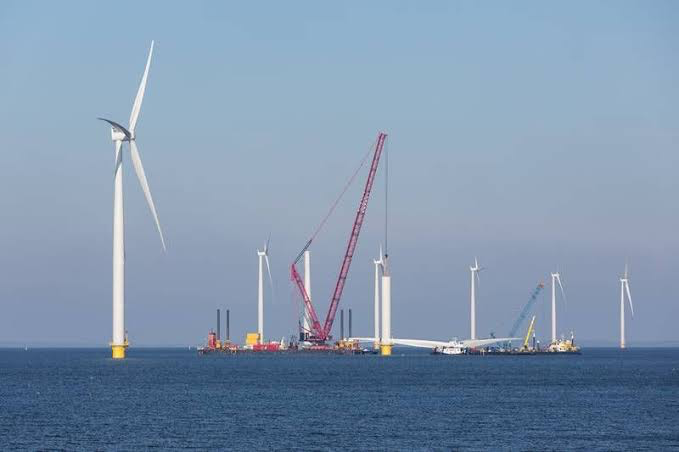The Global Wind Energy Council’s (GWEC) Global Offshore Wind Report 2024 has spotlighted South Africa and Morocco as key markets to watch for offshore wind energy. GWEC’s report highlights the industry’s “truly global growth” after 2023 marked the second-highest annual installations. This surge in installations sets a strong foundation for accelerated expansion over the next decade.
In 2023, the wind industry installed 10.8GW of new offshore wind capacity, bringing the global total to 75.2GW. Despite macroeconomic challenges, this 24% increase from the previous year demonstrates the sector’s resilience and growth potential. GWEC forecasts 410GW of new offshore wind capacity to be installed by 2030, aligning with global targets.
Most of this growth will occur between 2029 and 2033, driven by new markets like Australia, Japan, South Korea, and several others. These markets are benefiting from focused government policies and industry collaboration, setting conditions for large-scale offshore wind development.
South Africa’s wind energy market has matured significantly over the past decade. This maturity is largely due to the inclusion of wind in the country’s energy planning. According to data from the South African Wind Energy Association (SAWEA), wind procurement in the Integrated Resource Plan (IRP) of 2010 paved the way for utility-scale projects. The first wind farms began operation in 2014 under Bid Window 1 of the Renewable Energy Independent Power Producer Procurement Programme (REIPPP).
The revised IRP 2019 further allocated 1,600MW of wind energy annually from 2021 to 2030. Studies, including a notable 2022 report by the Council for Scientific and Industrial Research (CSIR), assessed the feasibility of offshore wind farms along South Africa’s coast. The report states that South Africa has the potential to produce 44.52TWh of electricity annually from turbines in shallow waters and 2,387.08TWh from turbines in deeper waters. This potential is equivalent to eight times the nation’s electricity needs.
In 2023, the World Bank began developing the Offshore Wind Roadmap for South Africa, expected to launch in 2024. A World Bank Group report estimates that South Africa could support 852GW for floating and 49GW for fixed offshore wind farms.
However, the ownership and permitting process remains a significant challenge. South Africa’s coastline is government-owned, with permits required for fishing, recreation, conservation, and mineral exploration. Offshore wind developments would need similar permits from the Department of Forestry, Fisheries and the Environment (DFFE), the South African National Defence Force (Navy), and other entities.
While Morocco has not set specific targets for offshore wind development, the government is exploring the technology’s potential. The European Investment Bank (EIB) recently awarded the Moroccan Agency for Sustainable Energy (MASEN) a $2 billion grant for a feasibility study on offshore wind. This study will examine the possibility of transforming Morocco’s Atlantic coast into an offshore wind energy hub.
A previous GWEC study estimated Morocco’s offshore potential at around 200GW. This new feasibility study will consider the technical, environmental, and economic aspects of such projects, aiming to establish a comprehensive plan for offshore wind development in Morocco.
GWEC’s report emphasizes the need for continued collaboration between industry and governments to build effective policy and regulatory frameworks. This collaboration is crucial for realizing the anticipated growth in offshore wind capacity.
The rapid expansion of offshore wind markets will play a significant role in achieving global renewable energy targets. As South Africa and Morocco continue to develop their wind energy capabilities, they set an example for other African nations. By investing in offshore wind, these countries can significantly contribute to the continent’s energy needs and sustainable development goals.
In conclusion, South Africa and Morocco are emerging as leaders in Africa’s offshore wind energy sector. With strong policy support, financial investment, and international collaboration, both countries are well-positioned to harness their vast wind resources. As they continue to develop and implement offshore wind projects, they will not only boost their own energy security but also contribute to global efforts in combating climate change.
Source: ESI Africa



